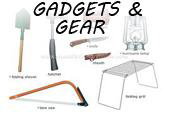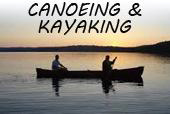Whether you’re an Eskimo in Greenland closing in for the kill on a whale hunt or a vacationer in Hawaii leisurely exploring scenic bays, the sea kayak is a prized vessel. Ranging from 12 to 18 feet long (longer for tandem) and from 26 to 30 inches wide, the sea kayak is a manuervable, speedy, and stable “boat.” In 1928, Franz Romero crossed the Atlantic Ocean solo in a sea kayak. His voyage from the Canary Islands to Puerto Rico took 58 days but then he was lost in a hurricane on the way to New York.
Most of us don’t want to hunt whales or break ocean crossing records. Most of us are simply looking for a pleasurable sport that affords us the ability to navigate hidden waterways and enjoy nature close up and personal. If you think sea kayaking is for you, you should do these things before buying your first sea kayak.
1. Become acquainted with the sport by going sea kayaking in a tandem kayak with an experienced friend. Pick up the Buyers Guide edition of Canoe and Kayak Magazine from a kayak dealer. You’ll see that kayaks range in price from under $200 to over $5000. You can kayak with nothing but a paddle or with as much as sails, gps, electronic fish finders, and state of the art rudders.
2. Decide what kind of kayaking you’ll want to do. If you just want to do the occasional day sea trip, a smaller kayak which will hold enough gear for a weekend campout will be sufficient. If it’s the longer expedition you’re pursuing, look at the expedition outfitted kayaks that are sea worthy in a range of conditions. If you’re going on an international trip, you may want a packable kayak, constructed of either fabric stretched over wood or aluminum or of inflatable fabric. Or maybe it’s surfing or racing you’re interested in. Racing kayaks are longer and narrow which makes them more unstable which leads us to step 3.
3. Take a safety class. Learn how to right an overturned kayak because it does happen. Experimenting with different kinds of kayaks and their “tippability” may give you a better sense for the variety you’ll feel most comfortable in.
4. Talk to those who know. Join a Kayak club. Go to beaches (lake or ocean) where kayaks are being put in the water. Compliment people’s kayaks and ask questions about them. At a dealer, ask for a test sailing.
5. Decide on the material cost and durability are two main factors. Plastic is inexpensive and impact resistant if you think your steering may need some work. However, it is heavy and difficult to repair. Fiberglass is more expensive but lighter and easier to repair. Composites like Kevlar or Carbon fiber are even more expensive but they’re tough and light. The most durable and the most beautiful are the kayaks made from wood. They can even be made from kits at home so you’ll experience kayaking from the beginning. They need to be polished to keep their lustre.
6. Get the right size. Kayaks come in different sizes to accommodate people who as we all know also come in different sizes. Be sure to “test drive” your kayak to make sure your legs have enough room.
So once you’ve chosen the perfect kayak for you and have learned how to use it safely, the world of water is yours. Just before dawn, you’ll carry your kayak down to water’s edge in Puget Sound, Maui, a small lake in the Rockies or Adirondacks and slip it into the water. The hush of nature broken only by the morning call of a Stellar Jay will be your companion as you glide across the water and join the thousands of others who have found their spirts renewed in a sea kayak.












